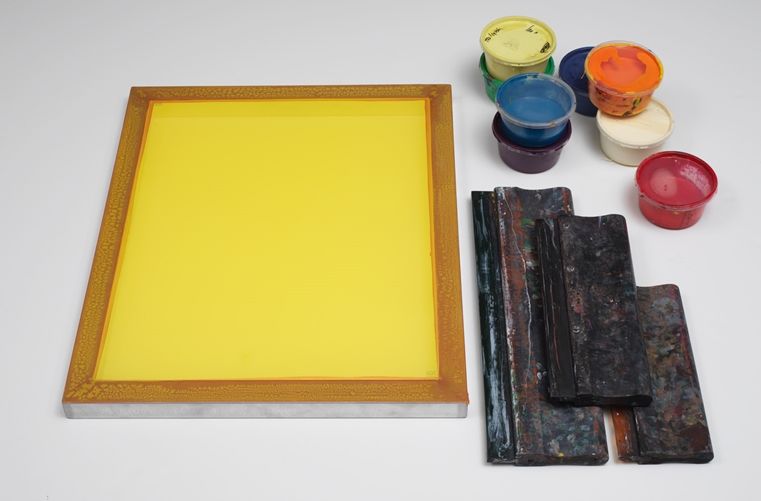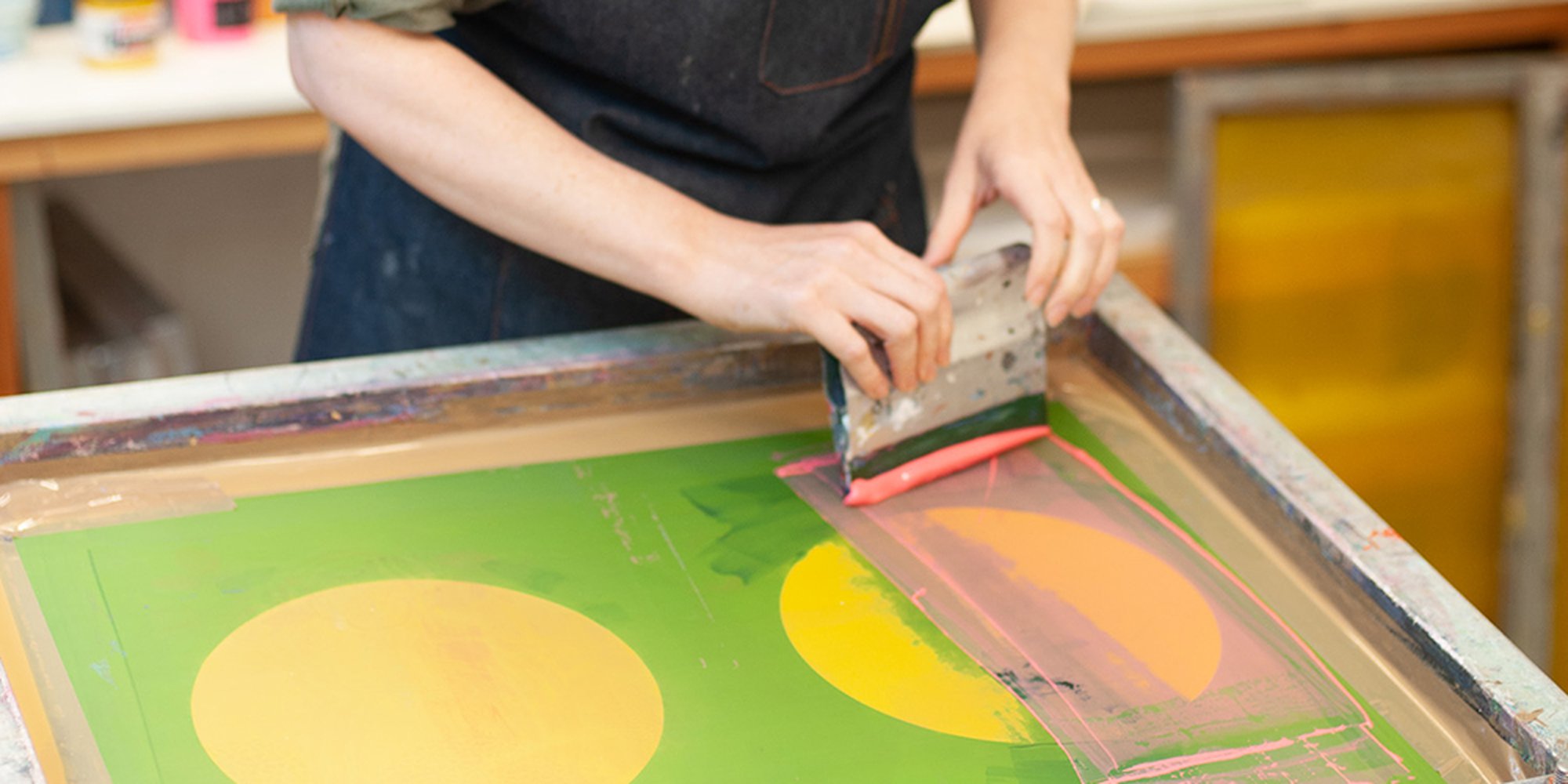The Crucial Guide to Understanding Screen Printing and Its Versatile Utilizes
Screen printing has an abundant history that goes back to ancient times, advancing right into an innovative strategy made use of throughout numerous markets today. This overview checks out the complexities of the screen printing process, describing its applications in advertising and marketing, fashion, and home style - 10:9 Design Company. Comprehending these principles can open up innovative potential for both creative and business tasks. The following sections will disclose crucial ideas and strategies to enhance one's screen printing endeavors
The History of Screen Printing
Screen printing has roots that map back centuries, its evolution reflects the artistic and technological innovations of various societies. Originating in ancient China, the strategy was initially utilized for decorating textiles and later infect Japan, where it ended up being indispensable to Ukiyo-e woodblock printing. The method shifted to Europe in the 18th century, where it acquired appeal amongst craftsmens and business printers. The creation of photo emulsion in the 20th century reinvented screen printing, enabling even more elaborate layouts and greater performance. Musicians like Andy Warhol even more thrust its popularity, using the tool to develop famous works that mixed commercialism and great art. By the late 20th century, screen printing had developed itself as a functional strategy, utilized in fashion, marketing, and art. Today, it remains to progress, incorporating electronic modern technology and expanding its applications across various industries.
The Screen Printing Refine Explained
Screen printing transforms creative visions right into substantial styles via a collection of accurate steps. Initially, an image is created and after that transferred onto a screen, generally made of fine mesh material extended over a framework. A light-sensitive solution is related to the screen, which is subjected to light, solidifying in areas not covered by the image. After cleaning out the unhardened solution, a stencil is formed.
Next off, the screen is positioned over the substratum, whether it be material, paper, or one more product. Ink is after that pushed with the open areas of the stencil utilizing a squeegee, transferring the style onto the substrate below. This procedure can be repeated for numerous colors, requiring separate screens for every hue. Ultimately, the printed product is cured using heat to assure the ink adheres appropriately, resulting in a resilient, vibrant style all set for use.
Sorts Of Screen Printing Techniques

In addition, specialty techniques, such as discharge screen printing, remove dye from the fabric to create softer prints, while aluminum foil screen printing applies metallic aluminum foil to achieve a shiny surface (10:9 Design near me). Each strategy provides distinctive attributes, accommodating numerous innovative needs and production ranges, inevitably expanding the possibilities within the screen printing domain name
Applications of Screen Printing in Different Industries

Additionally, the signs and marketing fields make use of screen printing for creating appealing display screens and banners. This method enables bold shades and detailed designs that capture interest. In electronics, screen printing is used for applying conductive inks to motherboard, essential for part connections. Moreover, the home decoration industry embraces screen printing to produce distinctive designs on textiles and wall art. Overall, screen printing acts as a vital tool across diverse areas, enhancing products with personalized and aesthetically attractive graphics.
Tips for Successful Screen Printing Projects
While embarking on a screen printing job, mindful focus to information can considerably boost the final outcome. Picking top quality materials is crucial; this includes the screen, inks, and substrates. Making use of appropriate mesh matters can influence ink deposition and detail resolution. Prep work is similarly important; detailed cleaning of displays and correct direct exposure times assure crisp prints.
Next off, exact registration is crucial for multi-color prints. Using placement devices can assist attain accurate layering. Furthermore, testing prints on scrap products before manufacturing assists recognize potential issues without throwing away resources.

Regularly Asked Concerns
What Materials Are Finest for Screen Printing on Fabric?
Cotton and polyester blends are perfect for screen printing on textile as a result of their toughness and ink absorption. Additionally, specialized fabrics like silk or canvas can produce one-of-a-kind textures and finishes, boosting the overall design quality.
Exactly how Do I Clean and Maintain Screen Printing Equipment?
To clean up and keep screen printing equipment, one must regularly wash displays with appropriate solvents, examine mops for wear, lubricate relocating components, and store all products in a dry, dust-free setting to extend their life-span.
What Are the Environmental Impacts of Screen Printing?
Screen printing can have considerable environmental effects, including chemical waste from solvents and inks, water use during cleansing processes, and power usage. Lasting practices and environment-friendly products are essential for decreasing these adverse effects.
Can Screen Printing Be Done in your home Effectively?
Screen printing can be efficiently done at home with the ideal materials and strategies. Enthusiasts can develop top quality prints, though success depends on their ability level, devices, and understanding of the process entailed.
What Are the Prices Related To Starting a Screen Printing Business?

Starting a screen printing company involves costs for equipment, products, and work space. Preliminary expenditures usually vary from a couple of hundred to numerous thousand dollars, relying on the scale, top quality of machinery, and preferred manufacturing capacity.
Screen printing has a rich history that dates back to ancient times, progressing right into a sophisticated method used throughout various markets today. Another technique, rotating screen printing, utilizes round screens, facilitating constant printing on material rolls, thus improving performance for large productions. In addition, specialized strategies, such as discharge screen printing, eliminate color from the material to develop softer prints, while foil screen printing uses metallic foil to attain a glossy surface. In the style field, screen printing is widely made use of to create vibrant designs on apparel, allowing brands to display their special designs. Cotton and polyester blends are suitable for screen printing on textile due to their resilience and ink absorption.